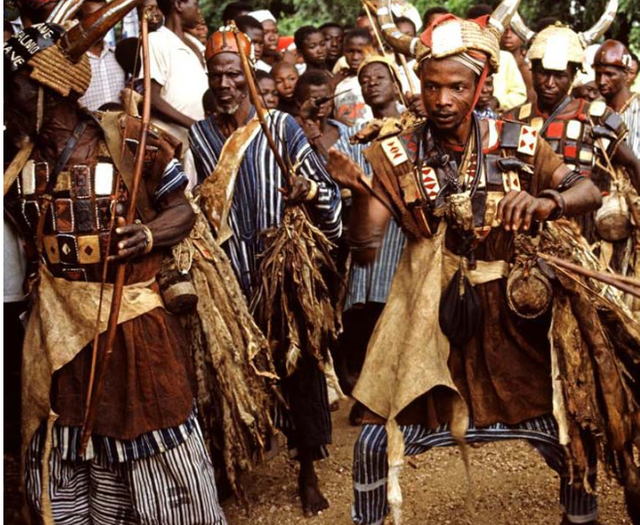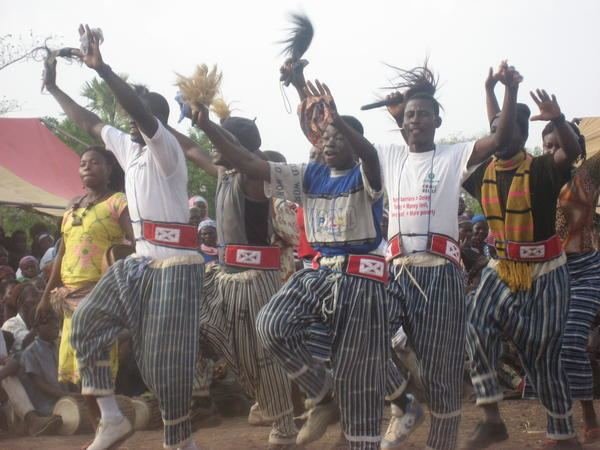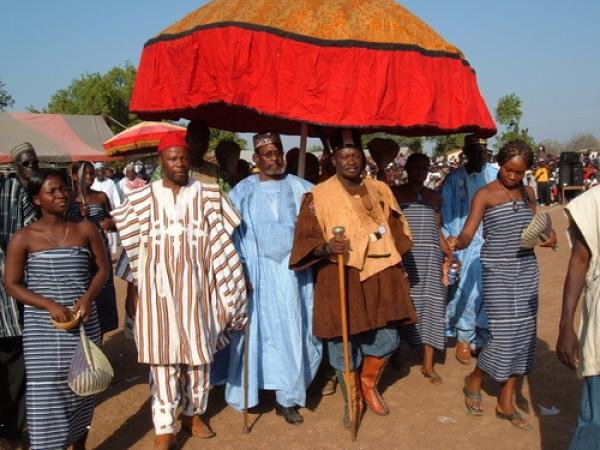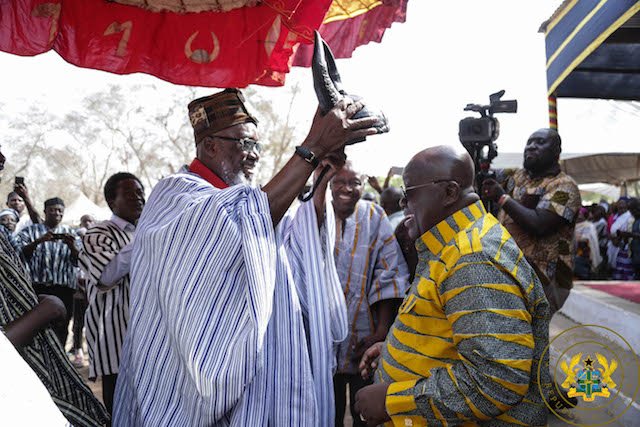Steem Ghana Week Contest 3-My Culture.
Hello everyone,
I am much privilege to share my culture to this our great community (Steem Ghana).
I am kassena by tribe and we Kassena people are part of the greater Gurunsi group and we were separated from the Gurunsi ethnic group at the beginning of the 20th century, as a consequence of colonialism and more specifically of the partitioning of the Burkina Faso Ghana area between France and United Kingdom.
As most of us the Gurunsi people live in Burkina, we the Kassena were isolated and gradually developed an independent cultural identity.
We mostly live on agriculture, growing millet, sorghum, yam, rice, groundnuts, beans and so on. During the dry season we also hunt and fish.
Traditionally, our society is grouped into five chiefdoms.
Namely;
Navrongo
Paga
Chiana
Kayoro
Katiu
Nakong
I am happen to be in the Chiana chiefdom, in a community called Gewnia.
I hope most of you in the community have heard of FAO festival which is celebrated by the people of the above chiefdom society I stated earlier. I am sharing with you the FAO festival.
It is held in these chiefdom Traditional Areas between November and February. It is a thanksgiving offering for good harvest. During the festival, the people display stalks of their first harvest of millet as a sign of sacrifice, and thankfulness to the gods.
The calendar has the names of the months from Binduri, Gumgum fogu, Lumwia, Lueru luem, Duum, Parim, Chaara, Dualue, Gwarem, Duaworo, Womudabu and fao which is November.
The farming season historically takes seven months starting from Duum-May and ends in Foa-November.
Among us there are three very important stages in our farming season namely Kosigri (pleading with God through the ancestors for rain). The “Kosigri” (prayer for the rains) festival is a solemn period for a fitting quantity of rain to support crop growth, prevention of draught and famine.
In years past, it involves fast/abstinence, procession to shrines and sacred grooves to make prayer and sacrifice. The final activity is “Kaburi Kaanim”. The historical examples of failure led to the distoolment of Pe Nadeo, Sinyea Sadungo (a tom-tom drummer) from Gia drumming on the refuse dump of the Chief’s Palace to alert of a possible draught and calling on the chief then 'Awe' (God) to rise up to the challenge.
The next stage preceding the FAO is the “Mokweka/Gakweia” (burnt offering of chicken using grass that has been left since sowing) festival. The “Mokweka/Gakweia”) festival is also a thanks giving festival to God and the ancestors for giving the people health to work to the point of being assured of the fruits of the earth.
It is the belief of we the kassena that, material blessing comes through hard work as God ordered man to “till the Earth”. The festival is celebrated on the second Saturday of September. Shortly after this celebration is the ban on noise making. The ban is meant to avoid tribulations, prevent storms and to provide fine weather. The belief is that in quietness and prayer God and the ancestors would protect their chosen people from injury and pain.
The Fao effectively starts after the ban on noise making is lifted. Various types of the bean family, potatoes etc are being gathered into the home through to the harvesting of Guinea corn and the late millet.
The Fao is the final stage of celebration of thanksgiving to God and ancestors for giving fitting quantities of rain to support crop growth, health to till the earth, protecting life during the season and for harvesting the crop. The festival acknowledges that what ever harvest one makes is a measure that both God and the ancestors deem as good enough for him. The first fruits harvested are used for sacrifices these include ground millet flour, Guli, birds, and ruminants in some cases or a bull in individual homes to the ancestors followed by the full harvesting activity of gathering the beans, the melon fruit (yarigani), the different types of potatoes, and later the millet crops. This is the high point for reconciliation. After the final harvest house elders would normally make a second sacrifice this time with pito brewed and asking God and the ancestors to let them eat their toil in good health. It is only thereafter that the food can be used for other purposes.
The celebration of fao is then start where people from all source of life come to celebrate. Always president of the republic of Ghana invited for these occasion.
The following are some pictures and videos of how people enjoy to the festival.



This how people display whilst going to grounds.
To note;
This modern public celebration people exhibit their culture and use the occasion to discuss developmental issues affecting the town where you will see chief's invites various NGO'S and other institutional bodies to come to their aid.
I will end here because is alot that goes around when it come to Fao festival.
A big thanks to @nattybongo and @Mcsamm for this great contest for our Culture, not forgeting of @oppongk and @njaywan for their good work in the community.
I say thanks for reading.
Thanks for this too. It is such a beautiful one to share. Let's keep sharing the beauty of our culture with the world.
Thanks boss.
“This post has been rewarded by @oppongk from @steemcurator04 Account with support from the Steem Community Curation Project."
Keep posting good content and follow @steemitblog for more updates!
Hello! I invite you to take part in the contest " One day in my city": https://steemit.com/hive-171319/@greatketty/one-day-in-my-town-the-results-of-the-first-week-and-the-start-of-the-second-week-of-the-contest
Thanks for sharing, it was fun reading some advise though i believe fitting the images in as you tell your story makes it even nicer and more attractive instead of leaving it at the bottom.
Okay. Thanks